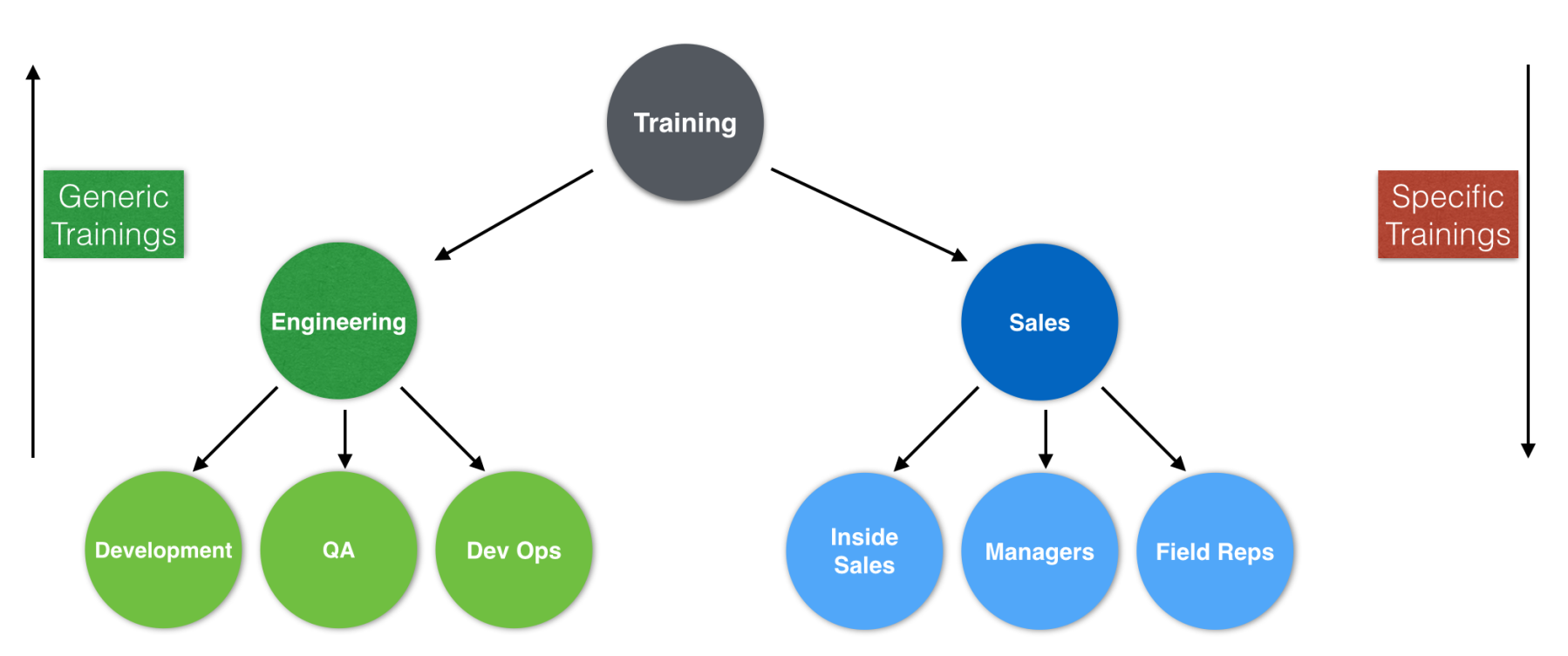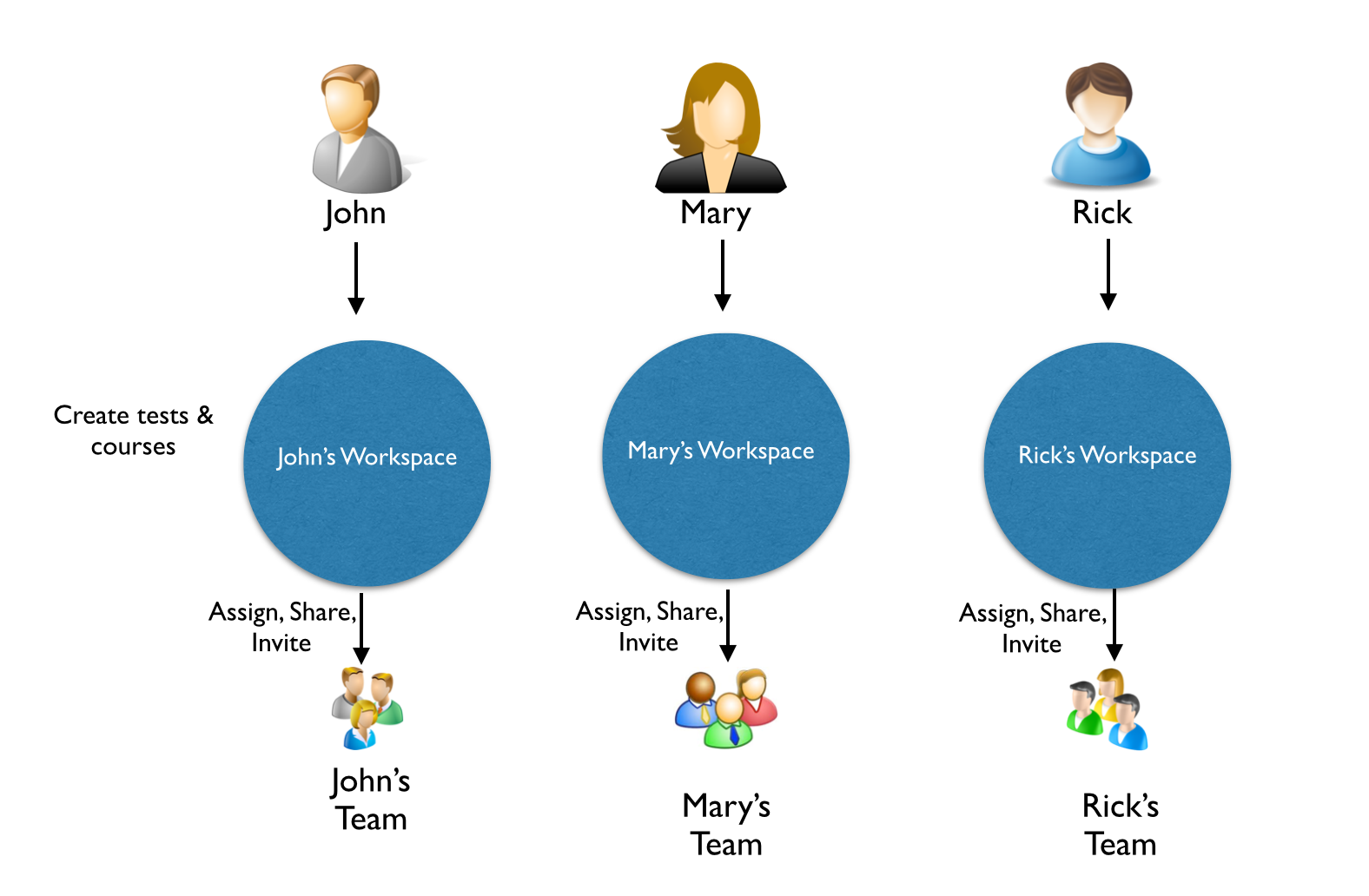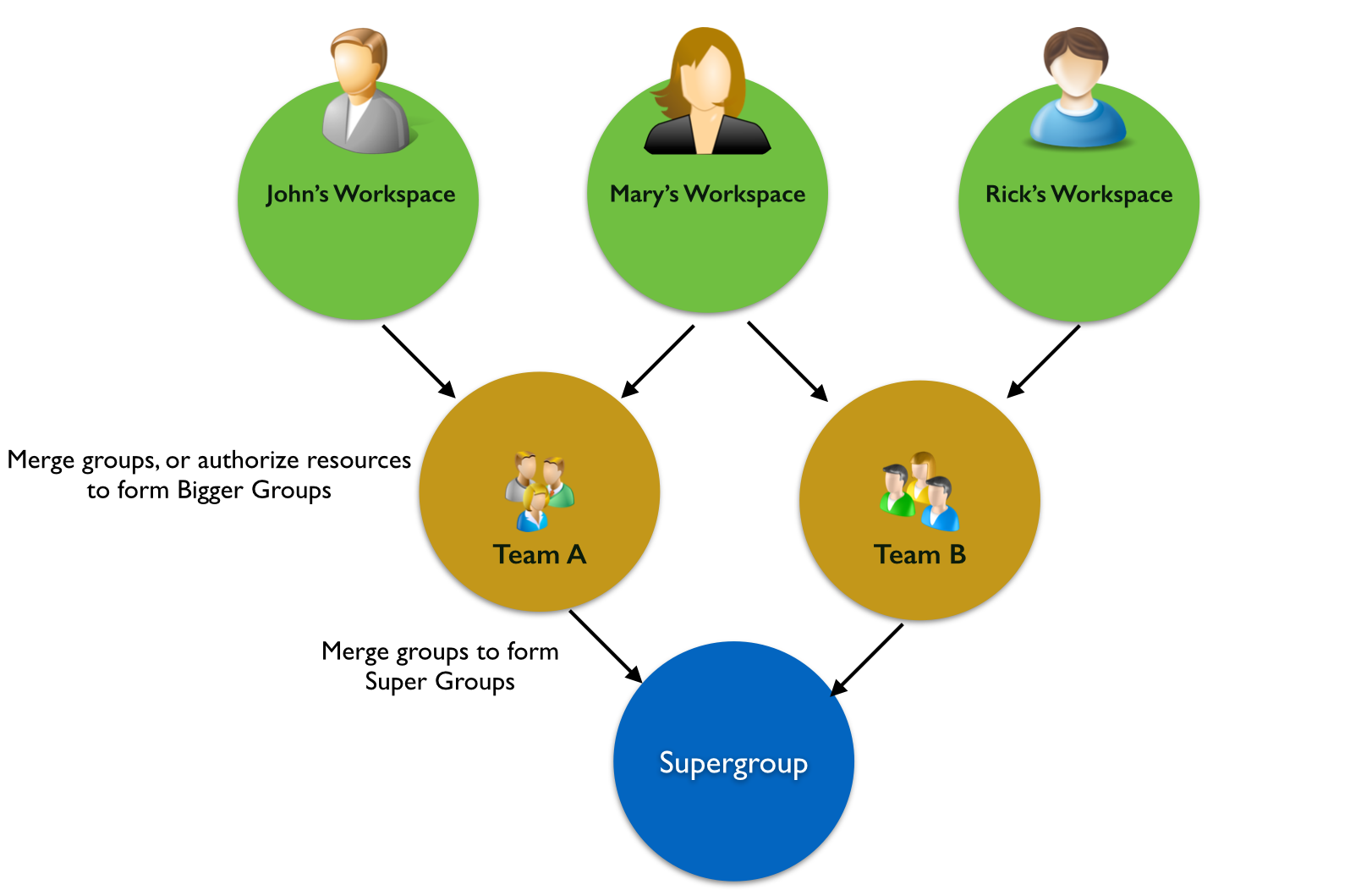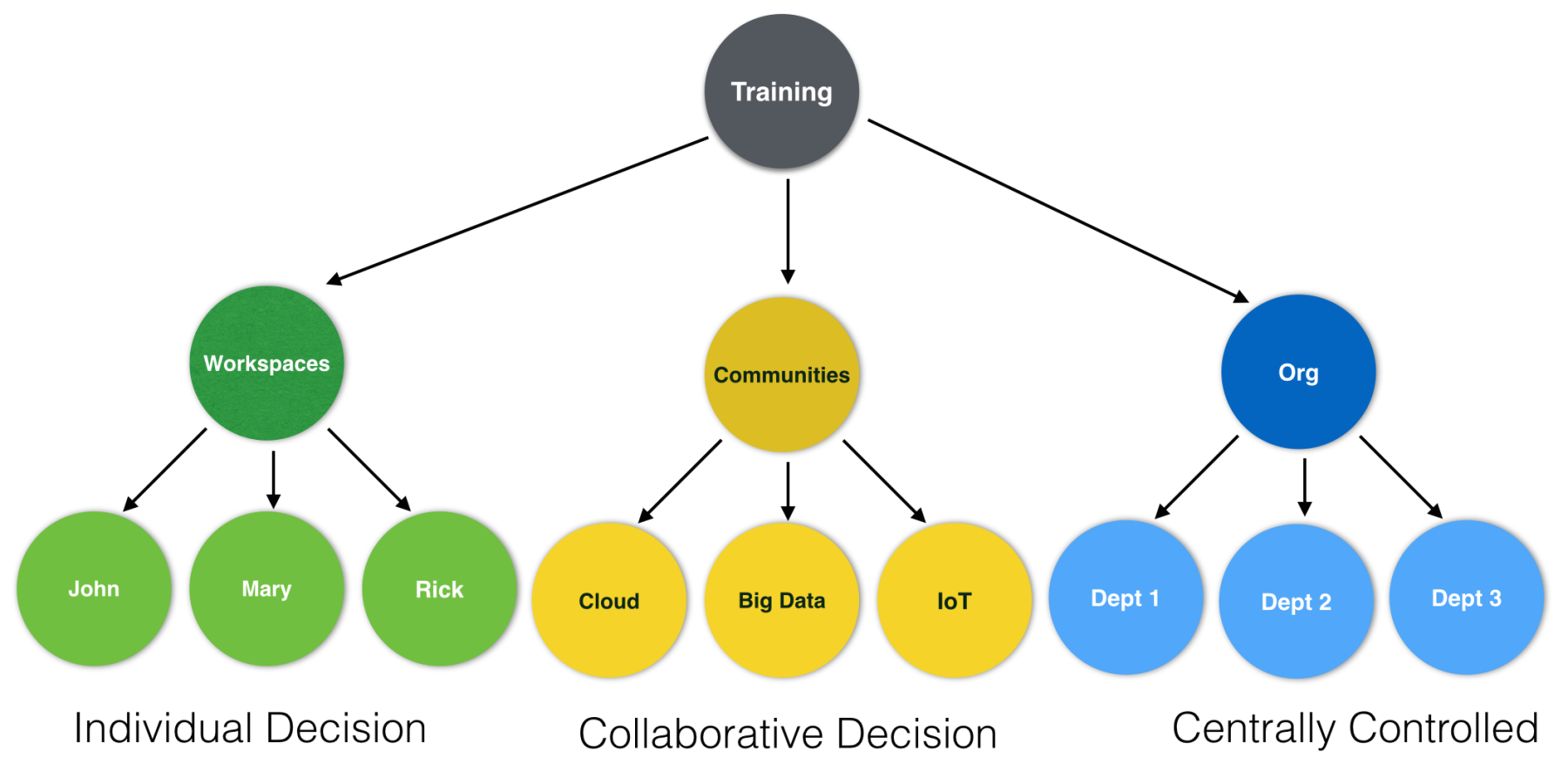Top Down & Bottom Up LMS implementation approaches for employee training
When it comes to LMS implementation in any organization for internal training, most common approach is top down. Top down approach is heavily based on maintaining controls at the top level and selectively giving some rights to lower levels in the training delivery hierarchy (which is generally same as org structure).

This approach requires lot of upfront planning, identifying stakeholders across the organization and resolving internal conflicts within different teams to create common ground for a centralized LMS. On many occasions, this whole process takes several months to a year before LMS can be fully rolled out to employees, thus resulting in huge upfront cost. Even after rollout, the top down control of rights creates an ongoing battle of control and sometime conflict of interest among different groups who needs to use the LMS. All these factors limit the adoption, and returns on the investment.
If we look deeper into why this happens so frequently, we find the biggest cause is a common issue with many LMS products; most of them are built with assumption of global role based controls. In most systems, only admin or instructor can do activities like course creation and setting up its delivery. These rights are not available for individual team or group level, resulting in big process bottlenecks. Course content has to be managed by a few selected people (L&D managers or Curriculum developers), for a very large number of teams. Team leads do not get the ability to quickly create their own training courses and deliver them to their teams. This also makes the job very tough for the L&D managers who typically are at the top of the Training Delivery hierarchy. They must find time to create & facilitate training courses and provision them for entire organization. This process takes too much time to plan and becomes difficult to execute. As a result, not all departments get equal attention and become indifferent to LMS or find their own (adhoc) solutions. A clear symptom of this effect we see is – existence of multiple LMS in the same organization, which is owned by different teams. Although this gives full control of the LMS these teams own, but as a whole the organization doesn’t get a clean & coordinated learning environment, and the cost becomes too high.
Top down approach has its merits in many kinds of training such as compliance, that requires full control, but there are several other kinds of training usage (especially informal) where it becomes a limiting factor.
EduBrite offers a clean solution to this problem by allowing possibility of a Bottom Up implementation strategy. We discussed this topic in our webinar last week, recording of which can be accessed here – http://bit.ly/1mSodHO

Bottom up approach works by allowing everyone to create training content (courses) and managing its delivery. LMS implementation can be done at rapid speed with just a potential announcement of its availability and may be a “getting started” video, and allowing different team leads to start using it for their teams. No setup of org hierarchy / departments / roles etc. is needed. The team, who need the LMS most, can be the first to adopt, and lead the way for other teams to follow. Leaders or experts can join hands and create community groups (super groups) as well by merging or sharing resources from their own group and evolve onto a organically grown Group structure for training/learning activities.

Regardless how large the overall organization is, team level implementation seems very simple and quick. L&D managers can still be overall admin for the system and can visualize the system usage, and other analytics about the adoption. They can even create a healthy competition among teams to make best use of the LMS. From the cost perspective also, you can get high return on investment by not buying a large number of seats for the LMS upfront; rather follow the scaling model based on the demand growth.
Since Bottom up approach is based on participation by teams, it becomes a more stable and likely more successful implementation, compared to top down model. If LMS permits (like EduBrite does) you can also have mixed implementation approach in the same system.

Key product features that allow implementation of bottom up strategy are –
- Allows training content creation, ownership and provisioning rights to all users, so they can develop and deliver trainings for their teams
- Allows Group level roles, sharing content across groups
- Allows multiple group membership by the same user, so they can play different roles in different groups
- Makes it easy to evolve the group hierarchy and allows possibility of multiple alternate hierarchies to co-exist in the same LMS
- Allows re-use of training materials to create different variations or courses and programs by re-packaging it to make it suitable for different groups
- Hierarchical group based permissions for administration, data visibility and reporting
Best implementation strategy heavily depends on the specific usage and may be different in each organization, but having familiarity with the options and availability of the right features in the LMS can give you full flexibility.
